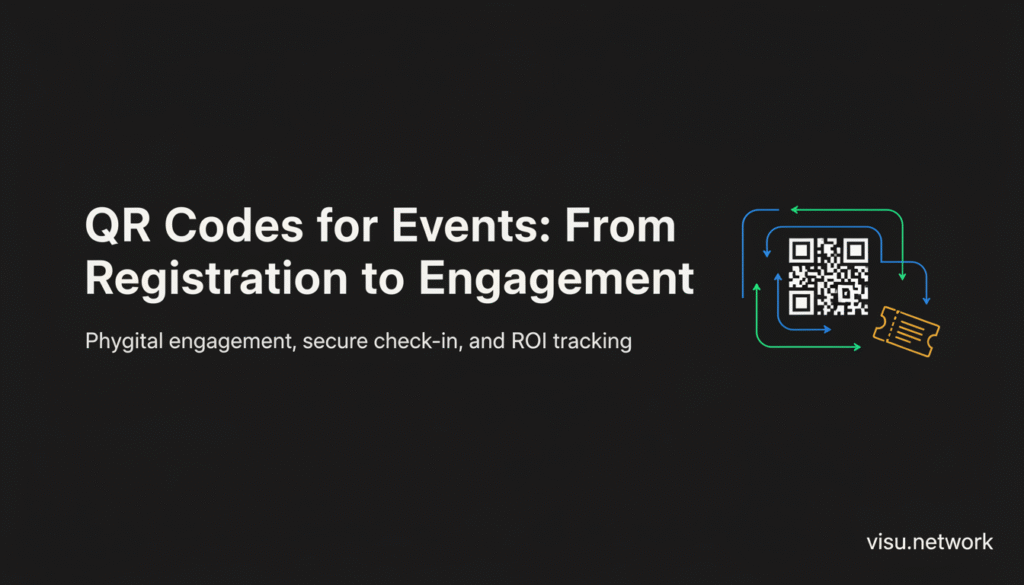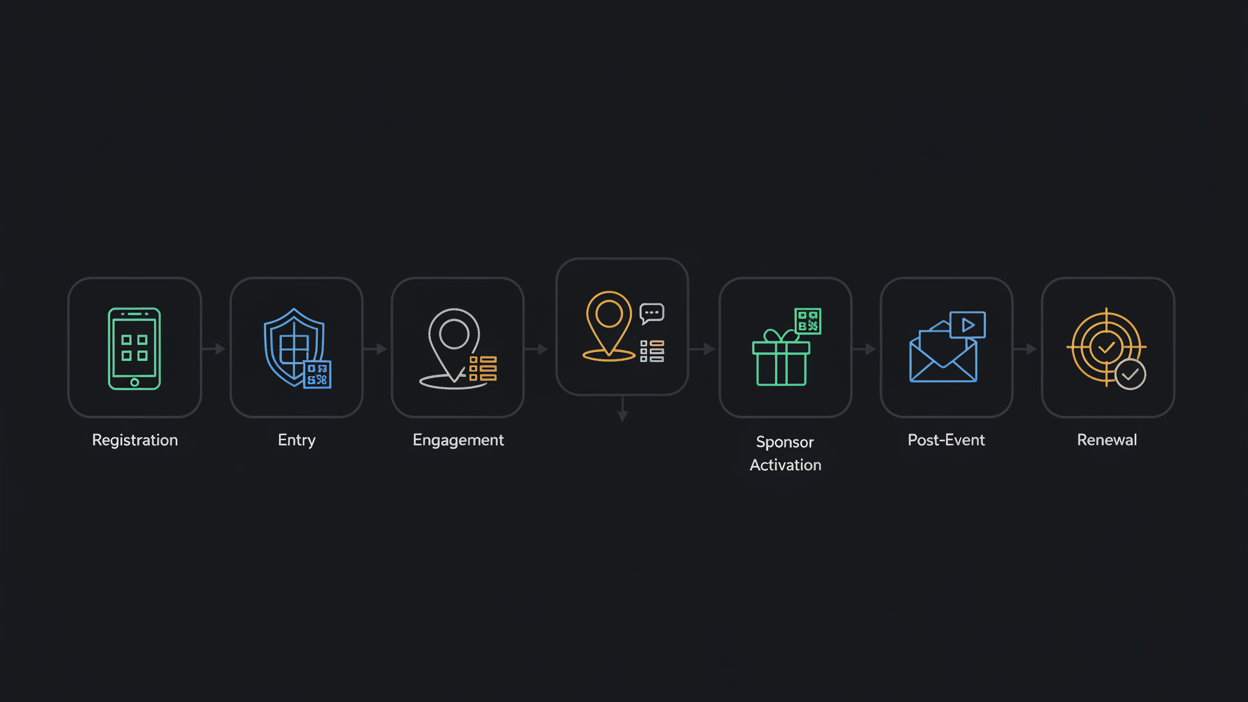
Turn Every Scan Into an Event Touchpoint
VISU connects registration, entry, sponsor activations and post-event follow-up in a single QR-powered journey.Why QR Codes Reshape the Event Experience
Long lines, paper tickets, and clunky check-ins are outdated. With QR codes, attendees register in seconds, receive personalized updates, and access interactive content. Organizers reduce costs by up to 60% on printing and staffing, while gaining real-time insights into attendee behavior. According to Packaging Dive, over 45% of U.S. consumers scanned QR codes in live settings in 2023—proving adoption is mainstream and mobile-first behavior is here to stay. The trend continues to accelerate: QR Tiger’s 2025 research shows QR code adoption rates are climbing globally across events, retail, and hospitality sectors.Practical Use Cases Across the Event Journey
1. Fast Registration & Secure Entry
Replace paper tickets with encrypted QR codes sent via email or SMS. Attendees scan at the door, reducing check-in time by 70% compared to manual lists. Dynamic codes refresh every few seconds, helping prevent duplication or fraud.2. Networking Made Instant
Attendees scan codes on badges to exchange digital business cards, LinkedIn profiles, or calendar invites—no app download required. This eliminates the awkward “let me find you later” moment and keeps networking fluid.3. Content Access On-Demand
Place QR codes on signage, wristbands, or screens to deliver:- Interactive venue maps
- Speaker bios and session slides
- Live polls and Q&A portals
- Exclusive content unlocks (e.g., VIP lounge access)
4. Sponsor Activation & Lead Capture
Sponsors embed QR codes on booth displays, swag, or product demos. Each scan can link to:- Product demos or AR experiences
- Discount codes or giveaway entries
- Lead forms that auto-populate CRM systems
Best Practices for Maximum Visibility
Following QR code best practices ensures scans convert:- Size: Minimum 2×2 cm (and larger for distance and signage).
- CTA: Clear prompts like “Scan for agenda” or “Get your discount”.
- Placement: Badges, wristbands, screens, table tents, entry gates.
- Design: High contrast, brand-aligned colors, tested before printing.
- Offline backup: Use codes that cache data or open PWAs in low-WiFi zones.
Extending Engagement Beyond the Event
QR codes remain valuable after the stage lights dim:- Feedback surveys: Scan to rate sessions and suggest improvements.
- Highlight videos: Link to event recaps or speaker recordings.
- Community invites: Join Slack, Discord, or LinkedIn groups.
- Early-bird discounts: Offer 20% off next year’s ticket via exclusive QR.
Measuring ROI: What to Track
With UTM parameters and analytics dashboards, organizers can measure:- Scan volume by placement: Which badge, booth, or screen drove the most engagement?
- Multi-touch behavior: How many attendees scanned 3+ times?
- Conversion funnel: Scans → landing page visits → ticket renewals or purchases.
- Time & location data: Peak scan times, hotspots, device types.
- 82% of attendees scanned at least once
- 4.2 average scans per person
- 23% conversion rate on post-event ticket offers
Offline & Low-Connectivity Scenarios
Not all venues have reliable WiFi. Use static QR codes with cached content (PDFs, vCards) or progressive web apps (PWAs) that load instantly and sync later. This ensures a seamless experience even in convention centers with spotty coverage.Checklist: Launching QR Codes at Your Next Event
- Generate dynamic QR codes with UTM tracking.
- Test scans on iOS and Android devices.
- Print codes at 2×2 cm minimum (larger for posters and banners).
- Add clear CTAs (“Scan to check in”, “Unlock your swag”).
- Train staff on troubleshooting (camera permissions, lighting, angles).
- Set up analytics dashboards before doors open.
- Prepare offline fallbacks (static codes or printed backups).
- Schedule a post-event QR campaign (survey, discount, community invite).
Takeaway
Adopting QR codes for events is no longer optional—it’s a competitive advantage. Each scan represents a chance to improve the attendee journey, activate sponsors, and capture actionable insights that drive future growth. 👉 Explore VISU Network to see how phygital engagement can scale your events—and unlock the full potential of QR code marketing.
FAQ: QR Codes for Events
Do QR codes really speed up check-in?
Yes — replacing paper tickets with scannable QR codes can reduce check-in time by up to 70%, especially when combined with pre-registration and dedicated scan lanes.
Can QR codes work for sponsors and exhibitors?
Absolutely. Sponsors can use QR codes on booth displays, swag or demos to drive traffic to product pages, contests, discount codes and lead forms that feed directly into CRM systems.
Are QR codes safe for tickets and access control?
Dynamic QR codes can be encrypted, time-bound and refreshed periodically to reduce duplication or fraud. Combined with access rules, they form a secure digital ticketing flow.
What kind of data can we track from event QR scans?
You can track scan volume by placement, time and device, plus downstream actions like page visits, sign-ups, coupon redemptions, and ticket renewals — all tied back to each QR touchpoint.
Do QR codes work in offline or low-connectivity venues?
Yes. Static QR codes and PWAs can load cached content such as PDFs, vCards or offline-ready pages, then sync analytics later once the device reconnects.

